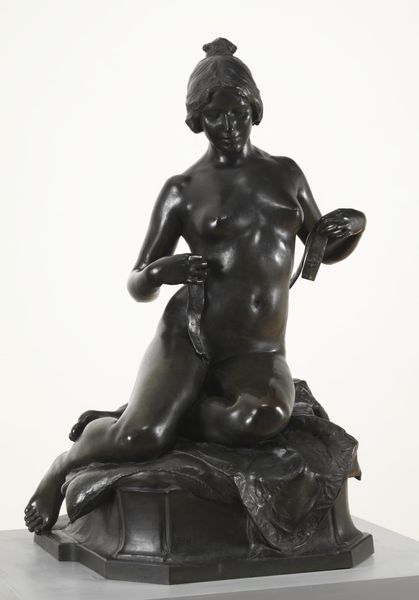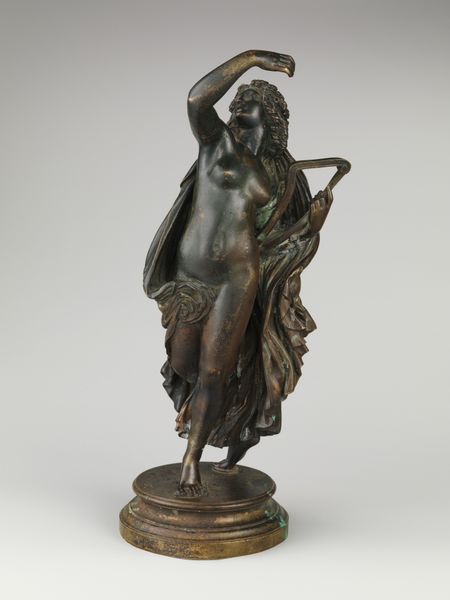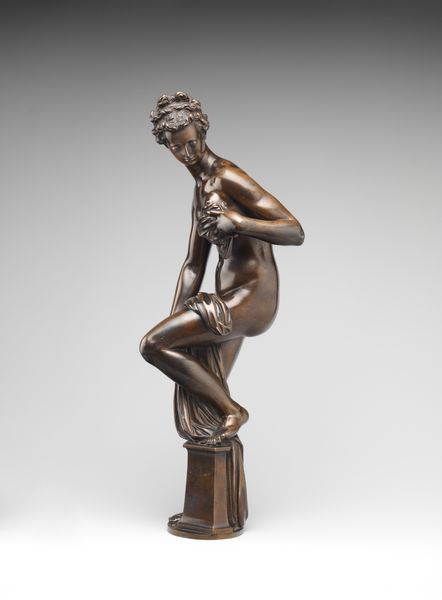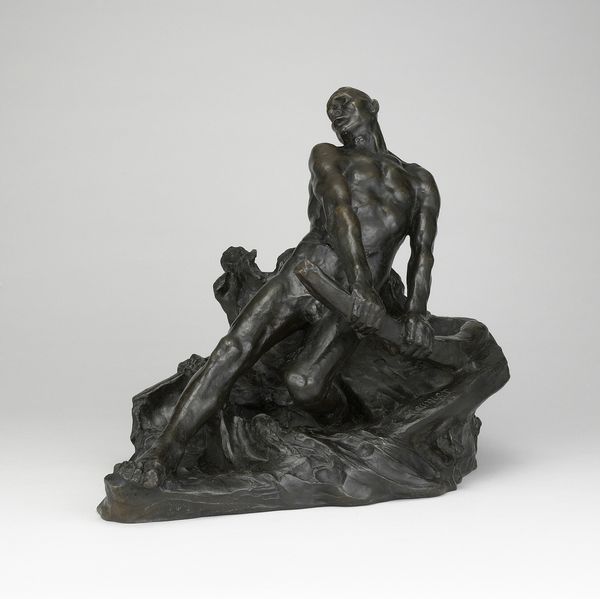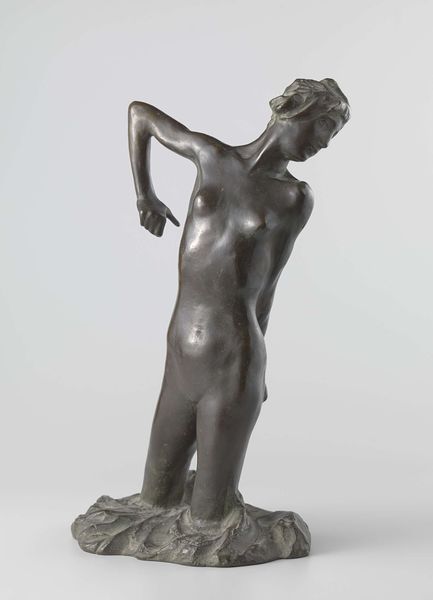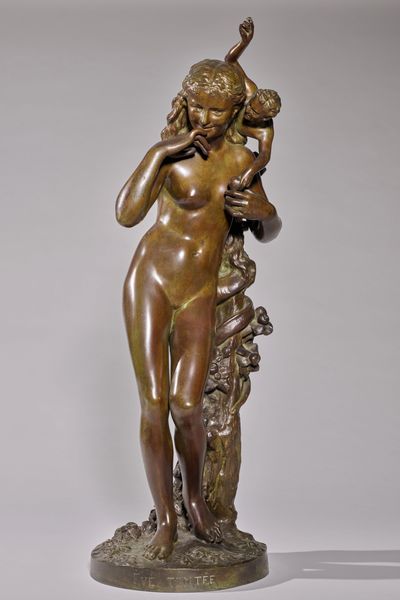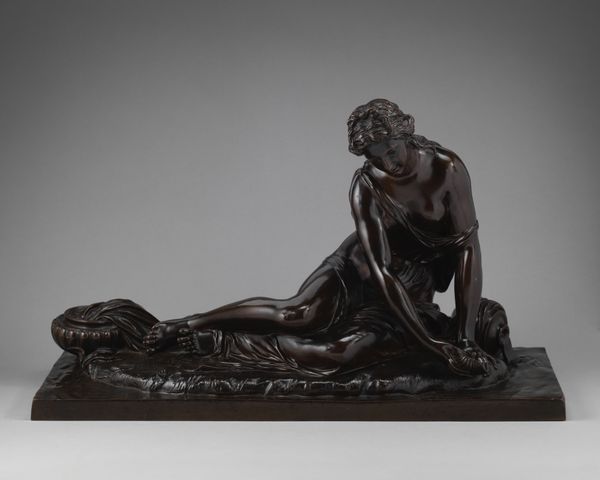
bronze, sculpture
#
neoclacissism
#
sculpture
#
bronze
#
figuration
#
sculpting
#
sculpture
#
romanticism
#
france
#
history-painting
#
nude
#
erotic-art
Dimensions: 26 x 12 1/2 x 11 1/2 in. (66.04 x 31.75 x 29.21 cm)
Copyright: Public Domain
Editor: We’re looking at "Psyche Abandoned," a bronze sculpture made around 1800 by Augustin Pajou. There’s a definite moodiness to the piece. It looks incredibly polished, yet the figure seems…despondent. What's your interpretation? Curator: Pajou’s “Psyche Abandoned” tells us a lot about the societal roles imposed upon women and how their emotions were publicly displayed. It’s crafted during a pivotal moment as Neoclassicism transitions to Romanticism; can you see that tension in her form? Editor: A bit...the idealized form is Neoclassical but the emotion is definitely Romantic! Curator: Exactly! While drawing from classical forms – her contrapposto pose, for example, suggests an admiration for ancient Greek sculpture – Pajou imbued Psyche with a vulnerability that was increasingly palatable to audiences weary of rigid, moralizing art. Consider the late 18th-century’s shifting social dynamics and a rise in sentimentalism. Do you think the public embraced the artwork as art or as moral instruction? Editor: That's a great question! Perhaps, they wanted to emulate such display of "gentile suffering?" To show they knew proper comportment and sympathy? Curator: Possibly! It’s a powerful sculpture, reflecting not only the artistic shift of the era, but also society's changing perceptions of female expression and how museums displayed gendered themes. Museums play a pivotal role in the creation of societal mores. Editor: It's fascinating how sculpture can act as a time capsule of these cultural and political forces at play. Thank you for your time! Curator: My pleasure. Seeing art as a reflection of societal forces always enriches the experience.

